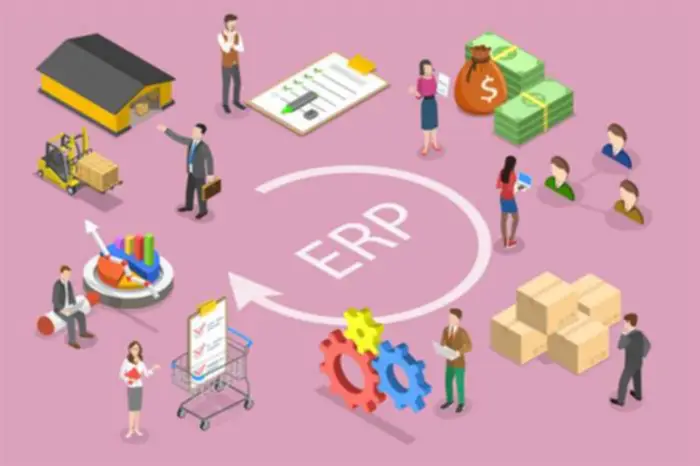A pandas DataFrame is a two-dimensional knowledge structure that has labels for both its rows and columns. For these conversant in Microsoft Excel, Google Sheets, or different spreadsheet software, DataFrames are very similar https://www.globalcloudteam.com/. Pandas was designed to work with two-dimensional data (similar to Excel spreadsheets). Just because the NumPy library had a built-in information construction referred to as an array with particular attributes and strategies, the pandas library has a built-in two-dimensional information structure called a DataFrame. Pandas provide lots of flexibility to work with DataFrame objects.
Information Structures In Pandas Library

To achieve the author’s name, we merge the DataFrames based mostly on the author’s ID. The Pandas .dropna() methodology is an important methodology for a knowledge pandas development analyst or data scientist of any degree. Because cleansing data is an essential preprocessing step, understanding the means to work with lacking information will make you a stronger programmer. Being an analytics library, pandas offers a ton of different options to research your knowledge.
Choosing Columns And Rows In Pandas

If you’re somebody who can get distracted in the few seconds it takes to navigate between an online web page and your IDE, contemplate the perks of studying theory and practice in one window. With the JetBrains Academy plugin, you can take a look at code as you read concept, greatly improving comprehension and interaction with the material. Now we apply iterrows() function so as to get a every component of rows.
Creating Pandas Dataframes From Scratch
- Pandas provides a lot of functionality to have the ability to see the information that’s stored inside a DataFrame.
- If not, then we want to install it on our system utilizing the pip command.
- Sqlite3 is used to create a connection to a database which we will then use to generate a DataFrame via a SELECT query.
- The reference describes how the strategies work and which parameters canbe used.
It is constructed on prime of the NumPy library which implies that plenty of the buildings of NumPy are used or replicated in Pandas. The Pandas library is a vital software for information analysts, scientists, and engineers working with structured information in Python. Pandas allows us to investigate massive knowledge and make conclusions based mostly on statistical theories.
Loading A List Of Tuples Into A Pandas Dataframe
The pandas .fillna() method is used to fill lacking values with a sure worth in a DataFrame. The technique allows you to pass in a value to fill lacking records with. Let’s see how we are in a position to fill the missing values within the ‘Units’ column with the worth zero. By performing some extra math, we are ready to see that the Units column has 89 missing information.
Getting Started With Pandas: A Tutorial
You can use the boxplot() technique to visualize the statistical knowledge returned by the describe() methodology. To calculate a descriptive statistic for a DataFrame or Series object, use the tactic describe(). Before putting in Pandas locally, you have to guarantee you’ve put in Python. Both Python and Pandas are supported on main operating techniques such as Microsoft Windows, Apple macOS and Linux Ubuntu. If you haven’t installed Python but, visit the Python web site and discover the distribution matching your current platform. You can install Pandas with several completely different package supervisor tools such as pip or Anaconda.
Pandas is a Python bundle built for a broad vary of knowledge analysis and manipulation including tabular information, time series and lots of types of data units. Jupyter Notebooks give us the flexibility to execute code in a specific cell as opposed to working the whole file. This saves lots of time when working with giant datasets and complicated transformations. Notebooks additionally present a straightforward approach to visualize pandas’ DataFrames and plots.

Core Components Of Pandas: Series And Dataframes

Pandas additionally allows Python builders to easily cope with tabular information (like spreadsheets) within a Python script. TensorFlow is a Python library for machine studying, helping you to course of information for constructing and coaching machine learning models. You can accomplish this from almost anyplace, whether or not utilizing a desktop, cell system, and even the cloud. Some specific machine purposes that TensorFlow supports include image processing and natural language processing.
If you keep in mind back to when we created DataFrames from scratch, the keys of the dict ended up as column names. Now after we select columns of a DataFrame, we use brackets similar to if we were accessing a Python dictionary. Notice in our motion pictures dataset we have some obvious lacking values in the Revenue and Metascore columns. Pandas is built on top of the NumPy package, that means plenty of the construction of NumPy is used or replicated in Pandas.

You can also chain collectively multiple conditions while using conditional choice. You can not use Python’s normal and operator, as a result of on this case we are not evaluating two boolean values. Instead, we’re evaluating two pandas Series that contain boolean values, which is why the & character is used as an alternative.